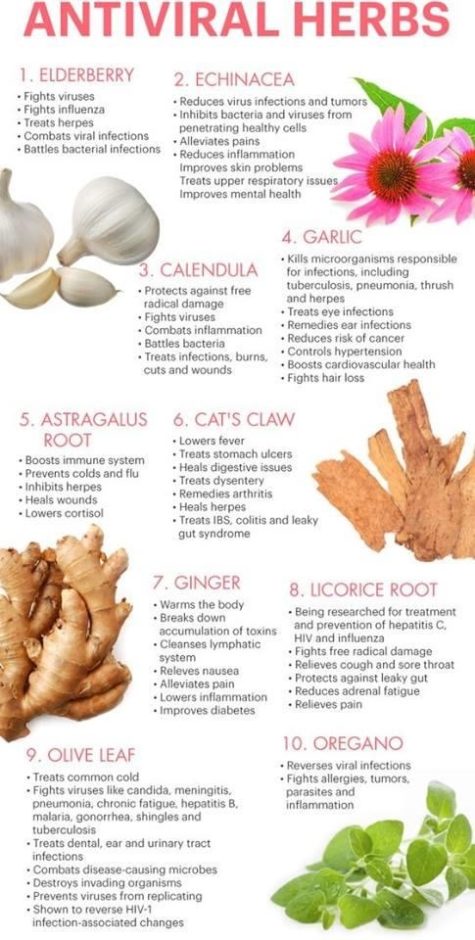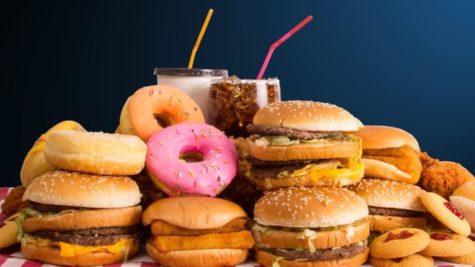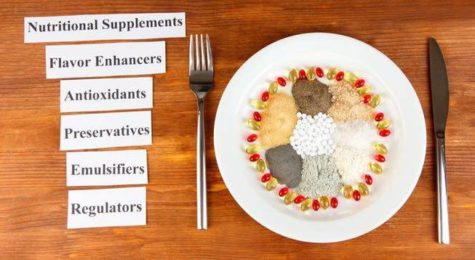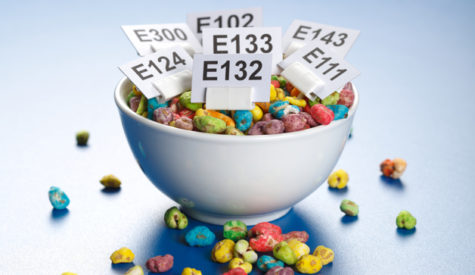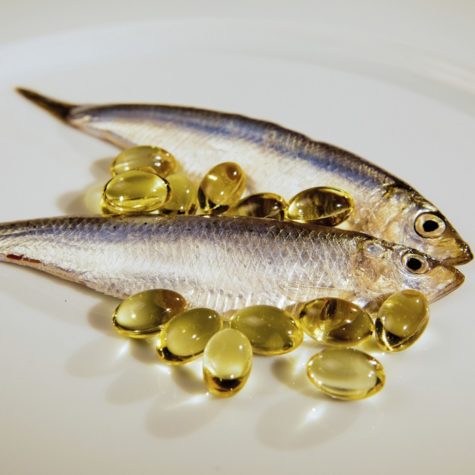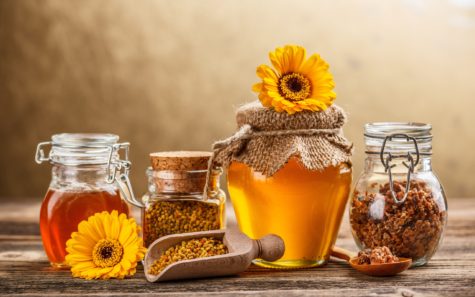Tips and Tricks
Antiviral Herbs
Why can’t I stop eating?
Here’s what Osho says in answer to that question:
Food is always a substitute for love. People who don’t love, who somehow miss a life of love, start eating more; it is a love-substitute.
When a child is born, his first love and his first food are the same thing — the mother. So there is a deep association between food and love; in fact food comes first and then love follows. First the child eats the mother, then by and by he becomes aware that the mother is not just food; she loves him too. But of course for that a certain Growth is necessary. The first day the child cannot understand love. He understands the language of food, the natural primitive language of all animals. The child is born with hunger; food is needed immediately. Love will not be needed until long after; it is not so much of an emergency. One can live without love one’s whole life, but one cannot live without food — that’s the trouble.
So the child becomes aware of the association of food and love. By and by he feels too, that whenever the mother is very loving, she gives her breast in a different way. When she is not loving, but angry, sad, she gives the breast very reluctantly, or does not give it at all. So the child becomes aware that whenever the mother is loving, whenever food is available, love is available. Whenever food is not available, the child feels love is not available, and vice versa. This is in the unconscious.
Somewhere you are missing a life of love so you eat more — that’s a substitute. You go on filling yourself with food and leave no space inside. So there is no question of love, because there is no space left. And with food things are simple because food is dead. You can go on eating as much as you want — food cannot say no. If you stop eating, the food cannot say that you are offending it. One remains a master with food.
But in love you are no longer the master. Another being enters into your life, a dependency enters into your life. You are no longer independent, and that’s the fear.
Ego wants to be independent and ego won’t allow you to love; it will only allow you to eat more. If you want to love then the ego has to be dropped.
It is not a question of food; food is simply symptomatic. So I will not say anything about food, about dieting or doing anything. Because that won’t help you, you won’t succeed. You can try a thousand and one ways; that won’t help. Rather, I will say forget about food, go on eating as much as you want.
Start a life of love, fall in love, find somebody who you can love, and immediately you will see you are not eating so much.
Have you watched? — if you are happy you don’t eat too much. If you are sad you eat too much. People think that when they are happy they eat too much, but that is absolute nonsense. A happy person feels so fulfilled that he feels no space inside. An unhappy man goes on throwing food into himself.
So I won’t touch on food at all…and you continue as you are, but find a lover.
Above All,
Don’t Wobble
Additives To Avoid
This is a listing of additives and preservatives that can have harmful effects on your health, specifically, Hyperactivity, Asthma, and Cancer. I personally think a good rule of thumb is that when ingredients listed on the packaging have unpronounceable names, you can assume whatever is inside the package probably isn’t good for you.
- Acacia Gum (Food Stabilizer): Asthma
- Acetic Acid, Glacial (Preservative): Asthma
- Aluminium (Preservative): Cancer
- Aspartame (Sweetener): Hyperactivity, Asthma
- Benzoic Acid (Preservative): Hyperactivity, Asthma, Cancer
- Benzoyl Peroxide (Bleaching Flour and Bread enhancer Agent): Asthma
- Biphenyl (Preservative): Cancer
- Bleached Starch (Thickener and Stabilizer): Asthma
- Butylated Hydroxyanisole (BHA) (Synthetic Antioxidant): Hyperactivity, Asthma, Cancer
- Butylated Hydroxytoluene (BHT) (Synthetic Antioxidant): Hyperactivity, Asthma, Cancer
- Butylhydroxytoluene (Synthetic Antioxidant): Hyperactivity, Asthma, Cancer
- Calcium Benzoate (Preservative): Asthma
- Calcium Hydrogen Sulphite (Preservative): Asthma
- Calcium Propionate (Preservative): Hyperactivity, Asthma
- Calcium Sorbate (Preservative): Hyperactivity, Asthma
- Calcium Sulphite (Preservative): Asthma
- Camauba Wax (Used in Chewing Gums, Coating and Glazing Agents): Cancer
- Carrageenan (Thickening & Stabilizing Agent): Asthma, Cancer
- Chlorine (Agent used in Bleaching Flour, Bread Enhancer and Stabilizer): Cancer
- Chlorine Dioxide (Bleaching Flour and Preservative Agent): Cancer
- Cyclamate (Sweetener): Cancer
- Cyclamic Acid (Sweetener): Cancer
- Diphenyl (Preservative): Cancer
- Disodium Guanylate (Flavor Enhancer): Hyperactivity, Asthma
- Disodium Inosinate 5 (Flavor Enhancer): Asthma
- Disodium Ribonucleotide 5 (Flavor Enhancer): Asthma
- Dodecyl Gallate (Synthetic Antioxidant): Asthma
- Ethyl Para Hydroxybenzonate (Preservative): Asthma
- Formic Acid (Preservative): Cancer
- Gelatine (Food Gelling Agent): Asthma
- Glutamic Acid, and all Glutamates (Flavor Enhancers): Hyperactivity, Asthma, Cancer
- Hexamethylene Tetramine (Preservative): Cancer
- Hexamine (Preservative): Cancer
- Hydrochloric Acid (Hydrolyzing Enhancer & Gelatin Production): Cancer
- Insoluble Polyvinylpyrrolidone (Stabilizer and Clarifying Agent added to Wine, Beer, Pharmaceuticals): Cancer
- Karaya Gum (Laxative, Food Thickener & Emulsifier): Asthma
- Magnesium Sulphate (Tofu Coagulant): Cancer
- Mannitol (Artificial Sweetener): Hyperactivity
- Monosodium Glutamate (Flavor Enhancer): Hyperactivity, Asthma, Cancer
- MSG (Flavor Enhancer): Hyperactivity, Asthma, Cancer
- Octyl Gallate (Synthetic Antioxidant): Asthma
- Orthophenyl Phenol (Preservative): Cancer
- Paraffin (Solvent, Coating, Glazing, Anti Foaming, Lubricant, Agent in Chewing Gum): Cancer
- Polysorbate (Emulsifier): Cancer
- Polyvinylpyrrolidone Insoluble (Stabilizer and Clarifying Agent added to Wine, Beer, Pharmaceuticals): Cancer
- Polyoxyethylene Sorbitan Monostearate (Emulsifier, Gelling Stabilizer, Thickener): Cancer
- Polyxyethylene Stearate (Emulsifier): Cancer
- Polyxyl Stearate (Emulsifier): Cancer
- Potassium Acesulphame (Sweetener): Cancer
- Potassium Benzoate (Preservative): Asthma
- Potassium Bisulphite (Preservative): Hyperactivity, Asthma
- Potassium Bromate (Agent used in Bleaching Flour): Cancer
- Potassium Ferrocyanide (Anti Caking Agent): Asthma
- Potassium Hydrogen Sulphite (Preservative): Hyperactivity, Asthma
- Potassium Metabisulfite (Preservative): Asthma
- Potassium Nitrate (Preservative): Asthma, Cancer
- Potassium Propionate (Preservative): Hyperactivity, Asthma
- Potassium Sorbate (Preservative): Hyperactivity, Asthma
- Potassium Sulfite (Preservative): Asthma
- Propionic Acid (Preservative): Hyperactivity, Asthma
- Propyl Gallate (Synthetic Antioxidant): Asthma, Cancer
- Propyl P Hydroxybenzonate (Preservative): Asthma
- Propylparaben (Preservative): Asthma
- Saccharine (Sweetener): Cancer
- Sodium Benzoate (Preservative): Hyperactivity, Asthma
- Sodium Bisulphite (Preservative): Asthma
- Sodium CarboxyMethyl Cellulose: Cancer
- Sodium Ethyl Para Hydroxybenzonate (Preservative): Asthma
- Sodium Metabisulphite (Preservative): Asthma
- Sodium Nitrite (Preservative): Hyperactivity, Asthma, Cancer
- Sodium Propionate (Preservative): Hyperactivity, Asthma
- Sodium Propyl P Hydroxybenzonate (Preservative): Asthma
- Sodium Sulphite (Preservative): Asthma
- Sorbic Acid (Preservative): Hyperactivity, Asthma
- Sulphur Dioxide (Preservative): Hyperactivity, Asthma
- Talc (Anti Caking, Filling, Softener, Agent): Cancer
- TBHQ (Synthetic Antioxidant): Hyperactivity, Asthma
- Tert Butylhydroquinone (Synthetic Antioxidant): Hyperactivity, Asthma
- Tragacanth (Thickener & Emulsifier): Asthma
- Vaseline (Solvent, Coating, Glazing, Anti Foaming, Lubricant, Agent in Chewing Gum): Cancer
- White Mineral Oil (Solvent, Coating, Glazing, Anti Foaming, Lubricant, Agent in Chewing Gum): Cancer
Artificial Food Colors
The following list has the food color number listed first and the harmful health effects listed last. This is a really long list, and makes me happy for my new policy of not buying foods with artificial colors of any kind.
- 102 & E102 ~ FD & C Yellow 5, Yellow 4, Tartrazine ~ Hyperactivity, Asthma, Cancer
- 104 & E104 ~ Quinoline Yellow ~ Hyperactivity, Asthma, Cancer
- 107 & E107 ~ Yellow 2G ~ Hyperactivity, Asthma, Cancer
- 110 & E110 ~ Sunset Yellow ~ Hyperactivity, Asthma, Cancer
- 120 & E120 ~ Carmines, Cochineal ~ Hyperactivity, Asthma
- 122 & E122 ~ Azorubine, Carmoisine ~ Hyperactivity, Asthma, Cancer
- 123 & E123 ~ Amaranth (Red 2) ~ Hyperactivity, Asthma, Cancer
- 124 & E124 ~ Ponceau, Brilliant Scarlet ~ Hyperactivity, Asthma, Cancer
- 127 & E127 ~ Erythrosine (Red 2) ~ Hyperactivity, Asthma, Cancer
- E128 ~ Red 2G ~ Hyperactivity, Asthma, Cancer
- 129 & E129 ~ Allura Red AC ~ Hyperactivity, Asthma, Cancer
- E131 ~ Patent Blue ~ Hyperactivity, Asthma, Cancer
- 132 & E132 ~ Indigotine, Indigo Carmine ~ Hyperactivity, Asthma, Cancer
- 133 & E133 ~ Brilliant Blue ~ Hyperactivity, Asthma, Cancer
- 142 & E142 ~ Acid Brilliant Green, Green S, Food Green ~ Hyperactivity, Asthma
- 143 ~ Fast Green ~ Asthma
- 150 & E150 ~ Caramel ~ Hyperactivity
- 151 & E151 ~ Activated Vegetable Carbons, Brilliant Black ~ Hyperactivity, Asthma, Cancer
- 154 ~ Food Brown, Kipper Brown, Brown FK ~ Hyperactivity, Asthma, Cancer
- 155 & E155 ~ Chocolate Brown HT, Brown HT ~ Hyperactivity, Asthma, Cancer
- 160b & E160b ~ Bixin, Norbixin, Annatto Extracts ~ Hyperactivity, Asthma
Source: Traditional Oven
Where To Get The Most Omega-3s
You usually find the most omega-3 fat in the fattiest fish from the coldest deep sea. Richest sources are:
- Mackerel
- Anchovies
- Herring
- Salmon
- Sardines
- Lake trout
- Atlantic sturgeon
- Tuna
Moderate amounts are found in the following:
- Turbot
- Bluefish
- Striped bass
- Shark
- Rainbow smelt
- Swordfish
- Rainbow trout
Shellfish – crab, lobster, shrimp, mussels, oysters, clams and squid – contain lesser amounts of omega-3s.
To get the most omega-3 benefits, bake or poach fish. Frying or otherwise adding fat, especially vegetable oils high in omega-6s, decreases the omega-3 potency in the fish.
Choose tuna packed in water and sardines canned without oil, unless it is a sardine oil, noted on the label as sild Added oils, such as soybean oil, can diminish the omega-3s. Also, draining oil from the canned tuna washes away from 15 to 25 percent of the omega-3s, whereas draining water off washes away only 3 percent.
You can also get some omega-3s in certain plant foods. The highest concentrations are in walnuts, flaxseed and rapeseed (from which canola oil is made) and purslane, a green leafy vegetable that grows wild in the United States and is commonly eaten in Europe and the Middle East. However, plant omega-3s appear to be only one-fifth as potent as marine omega-3s in fostering beneficial reactions in cells.
From: Food Your Miracle Medicine
Cooking With Honey
As many cooks have found, honey does more than sweeten and nourish – it adds its subtle depth, body, and mellow flavor to any dish in which it is used. Bakers have long relied upon honey as a necessary ingredient in all their tastiest products, not only for the flavor and color it adds, but because honey assures a moist and tender texture in all breads, cakes, and other baked goods.
Honey can be used in any recipe that calls for an all-purpose sweetener. Here are a few suggestions for the best possible results in cooking with honey.
- When substituting honey for sugar in your favorite recipes, use equal amounts of honey for sugar, up to one cup. Then, reduce the total amount of other liquids by 1/4 cup for every cup of honey used.
- When baking with honey, lower the oven temperature about 25 to 30 degrees F, to prevent over-browning.
- When measuring honey, first coat the measuring utensil with a small amount of oil, otherwise, the honey will tend to stick to the measuring cup or spoon.
- Store honey at room temperature rather than in the refrigerator. Keep it tightly covered and in a dry place.
- Use 1/4 teaspoon of soda for each cup of honey in baking. This will neutralize honey’s natural acidity.
- If honey granulates, place its container in hot water until the honey is once again liquid.
- Foods, and especially baked goods, sweetened with honey will tend to taste their best if served the day after they are baked.
- Honey, because it is hygroscopic, tends to keep foods moist and tender. Therefore, if you are baking goodies for kids away at school, overseas servicemen, or friends out of town, bake with honey to insure freshness.
From: The Honey Cookbook
Heat Diffuser Info
Many of the macrobiotic recipes call for a heat diffuser. They can be purchased at Amazon, or any store well stocked with kitchen and cooking items. Here’s a link to a google search for heat diffusers for sale: Shop for Heat Diffuser.
If you don’t have one, you can make do with a pie plate and a stove top. In the following video, Kenzi Wilbur shows you how to hack a heat diffuser with a pie plate. By inverting your pie plate over the stove, you can create an even and thorough cooking surface that can also take the place of your double-boiler.
The Best and Worst of Fish
Unfortunately, fish, such an ancient benefactor, is sometimes contaminated with modern poisons, such as pesticides and other industrial chemicals. Here are ways to get the most health benefits from fish with the least hazards.
- Choose saltwater ocean fish over freshwater fish from streams, rivers and lakes, which are more apt to be polluted.
- Avoid sport fish caught by recreational fishermen in lakes and streams. They are most likely to be contaminated.
- Choose smaller fish over larger fish. Small fish, like sardines, have had fewer years of exposure to pollutants.
- Eat a variety of fish instead of just one type. This reduces the risk of overdosing on one contaminated source.
- Don’t eat fish skin, which is a prime depository of toxic chemicals.
- For a safer bet, you can choose farm-raised fish, such as catfish and salmon, not likely to be contaminated; however, they usually have less omega-3 type oil than wild fish.
- Don’t over do it. Although some populations, such as Japanese fishermen and Eskimos, with low disease rates eat fish every day, sometimes as much as a pound, it’s not necessary to eat so much to reap the benefits of fish. Most studies suggest that regularly eating fish two or three times a week can make a tremendous dent in heart disease, cancer and other chronic diseases.
- A special caution for pregnant women whose fetuses could be damaged by toxic chemicals. Forgo fish from inland waters, and restrict swordfish, shark and fresh tuna to once a month. Some experts also advise pregnant women not to eat more than 7 ounces of tuna a week.
Source: Food – Your Miracle Medicine
Keep The Cardiologist Away
Here is some great diet advice to keep the cardiologist away:
- The number one advice to keep heart disease away has to be eat more fatty fish, high in omega-3 fatty acids – at least an ounce a day or a fish serving 2 or 3 times a week.
- Also go heavy on garlic, onions and all kinds of other vegetables and fruits to keep plenty of antioxidants in the blood, as well as anticoagulants that protect arteries from clogging.
- Shun fatty animal foods, such as high fat meat and dairy products.
- Use olive oil and canola oil.
- If you drink alcohol, a regular dose of a drink or two a day, especially of wine with meals, may act as antidotes to heart disease, but if you do not already use alcohol, do not start drinking, because the dangers can well outweigh the benefits. If you drink more than two drinks a day, cut down. Heavy drinking harms your heart and your general health and boosts chances of death.
- Restrict coffee to a couple of cups a day if you have heart beat irregularities. There is no known advantage to switching to decaf to prevent heart disease.
Such advice is doubly important if you have already had a cardiovascular problem. “Second-chance diets” can intervene to prevent further damage to arteries, staving off subsequent heart attacks, strokes and other cardiovascular events.
How To Get The Best Antioxidants
Finding the foods with the most disease fighting antioxidants is a simple matter of paying attention when grocery shopping, and later when preparing meals. When you choose fruits and vegetables, look for those with color, usually the deeper the color, the more antioxidants. Also, fresh and frozen fruits and vegetables have more antioxidants than those that are canned, processed or heated.
Generally you get more antioxidants if you eat:
- Red grapes rather than green or white grapes.
- Red and yellow onions instead of white onions.
- Cabbage, cauliflower and broccoli raw or lightly cooked.
- Garlic raw and crushed.
- Fresh and frozen vegetables rather than canned ones.
- Steam your vegetables instead of boil them.
- Extra virgin cold-processed olive oil
- The deepest, darkest green leafy vegetables.
- Pink grapefruit instead of white grapefruit
- Whole fruits rather than juices.
- Fresh and frozen juices instead of canned ones.
- The deepest orange carrots, sweet potatoes and pumpkins.
Source: Food – Your Miracle Medicine
